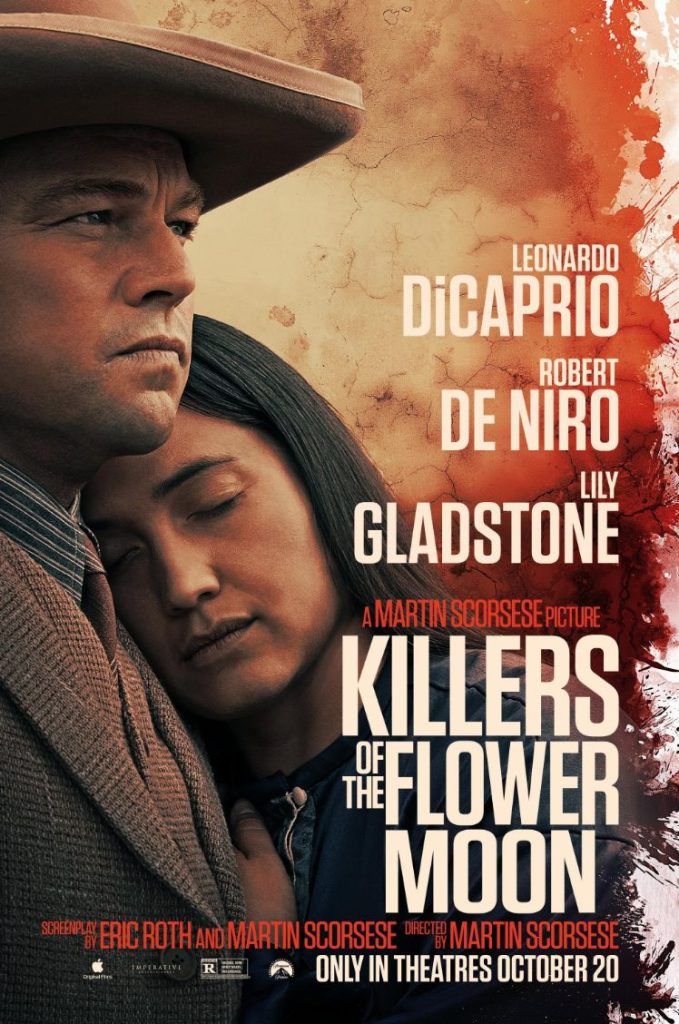
With a runtime of three and a half hours, Martin Scorsese’s “Killers of the Flower Moon” beats even this year’s other historical epic “Oppenheimer,” which clocked in at three hours exactly. And though both films are opulent in style and budget, “Killers” lacks the captivating perspectives that Christopher Nolan’s characters delivered; while still engaged with the storyline, I found myself checking the time and stifling a yawn somewhat often. The trouble lies not with the historically true terror — which after nearly a century of being repressed, warrants being shared on the big screen for posterity’s sake — but rather with the familiar trope of white racist capitalists hogging the screen with long-winded monologues in the pursuit of power and greed.
“Killers” details — with sometimes agonizing brutality — the true story of the Osage Indians in 1920s Oklahoma, whose oil riches and rights are targeted by white crime lords looking to redirect the Natives’ inheritances through marriage, murder, and erasure. It’s the telling of William Hale, a wealthy cattle rancher disguised as a “friend” of the Osage, and his nephew Ernest Burkhart, an easily malleable and spineless man, who plotted to systematically kill off Ernest’s wife’s family. Why? As Ernest (Leonardo DiCaprio) puts it time and time again throughout the film: “Well I do love money.” And for money’s sake, Ernest aids his uncle in planning an explosion, shootings, and the poisoning of his own diabetic wife. In total, during this historical “Reign of Terror,” over 60 Osage people were mysteriously murdered.
For the horror of what happened to be conveyed, one could argue that the harrowing scenes where William (Robert De Niro) and Ernest contract the wipeout of Mollie Kyle (later Mollie Burkhart), her sisters, and Henry Roan are necessary. But as unsettling as these scenes are, what’s even more unsettling is the lack of Native voices: rather than telling the Osage history from the point of view of victim Mollie (Lily Gladstone) — or any Native resident who was targeted — there are lengthy scenes focusing on the construction of the dehumanizing murders committed, not their decades-long impact and devastating consequences. Even Mollie’s grief is minimized to a few moments as each murder is carried out.
Leaving the theater, audiences are faced with questions of how far greed will carry evil, why it took the FBI so long to investigate, and at what point one’s complacency toward atrocity is worse than committing the actual atrocities oneself. This being said, “Killers” is certainly still worth seeing as it is an integral piece of history that shouldn’t be ignored.
Movie Times: Click Here
Genre: Drama/Crime
Director: Martin Scorsese
Actors: Louis Cancelmi, Janae Collins, Robert De Niro, Leonardo DiCaprio, Brendan Fraser, Lily Gladstone, Cara Jade Myers, Jesse Plemons, Scott Shepherd
Runtime: 206 minutes
Rating: R for violence, some grisly images, and language




